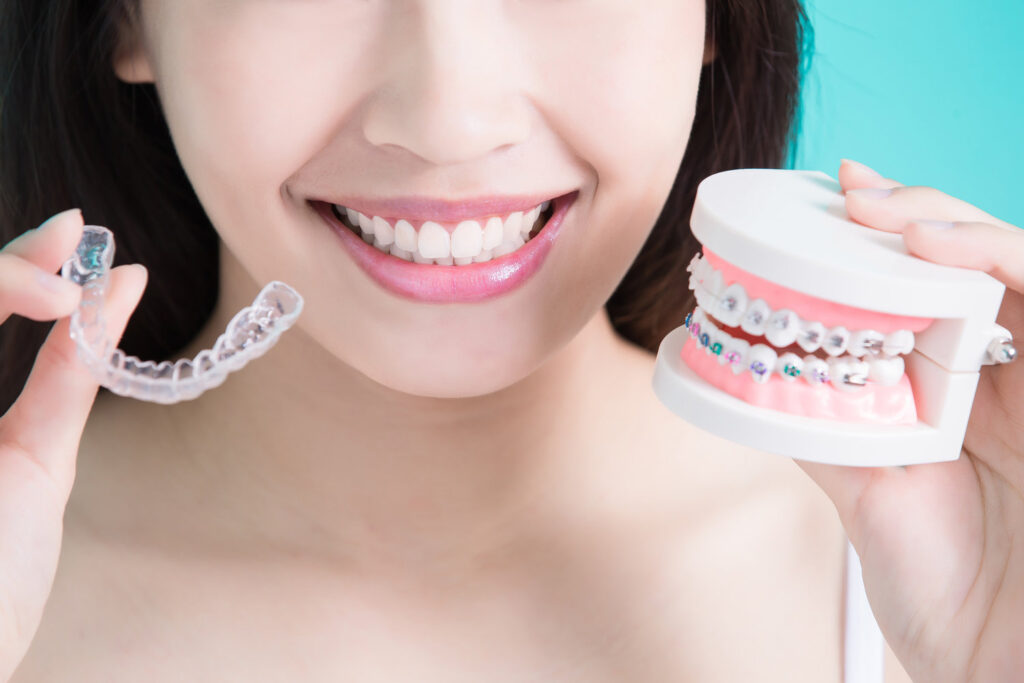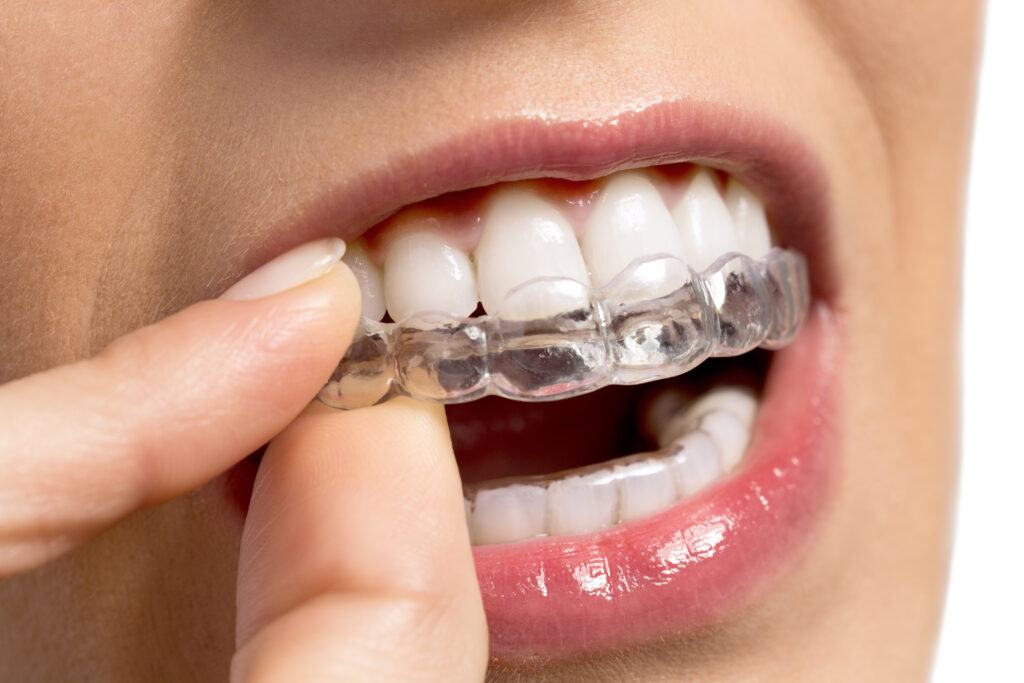For most adult patients, the appeal of clear aligner treatments (such as Invisalign®, Spark® and 3M Clarity) is the aesthetics and convenience. Aligners are less visible than ceramic braces. In an instant, you can remove your aligner tray and be camera-ready for special occasions. While not recommended for long stretches of time, this ability to pause your treatment means that you can forget about feeling self-conscious about your treatment showing up in photos.
An important part of clear aligner treatment plan involves the use of small buttons or attachments to help guide your teeth into their new position. Here are some of the most common questions we are asked about aligner attachments if you are considering clear aligner treatment.
What are attachments in clear aligner treatment?
Attachments or ‘buttons’ as they sometimes called, are small white tooth-coloured shapes that are affixed to the teeth during clear aligner treatment. Due to the round and smooth shape of teeth, attachments help move the teeth with precision in the correct direction to achieve the best result most efficiently. An orthodontist will design the attachments specifically required for your individual treatment.

Why will my orthodontist use attachments?
Are all attachments the same?
Clear aligner attachments can come in a range of sizes and shapes, and your orthodontist will prescribe the correct attachments for your treatment. The shape and placement of the attachments is very important as they are oriented to deliver the right type of force to help the tooth move or rotate without placing unnecessary stress on the roots.

The attachments are virtually invisible and are made from a tooth-colored white filling material, glued to the surface of your teeth, and get trimmed back when aligner treatment is over.
In most cases, the attachments are barely noticeable with or without the aligner trays in place and most people leave them on even if they have a special event.
To learn more about clear aligners, you can read our e-book here. Find a specialist orthodontist near you who can give you information about the requirements of your own treatment.











